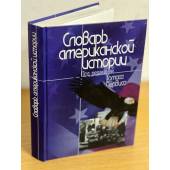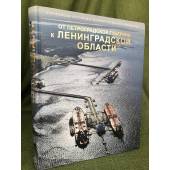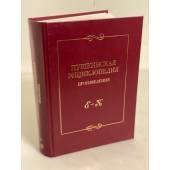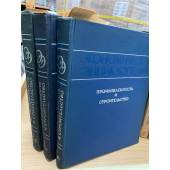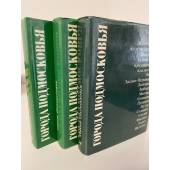
No products
Product successfully added to your shopping cart
There are %d items in your cart. There is 1 item in your cart.

Categories
- Albums (2075)
- Antique (before 1850) old books (before 1941) (582)
- Art and culture (5317)
- Audiobooks, compact discs (CD) (119)
- Autographed books (244)
- Board games (19)
- Books for school (4684)
-
Books in foreign languages
(8485)
- Books in Altai (4)
- Books in Azerbaijani (47)
- Books in Belarusian (46)
- Books in Bulgarian (2)
- Books in Dutch (2)
- Books in English (6652)
- Books in Estonian (10)
- Books in Finnish (7)
- Books in French (43)
- Books in Georgian (37)
- Books in Greek (2)
- Books in Hungarian (6)
- Books in Italian (12)
- Books in Japanese (7)
- Books in Karelian (3)
- Books in Kyrgyz language (6)
- Books in Latvian (46)
- Books in Lithuanian (7)
- Books in Norwegian (4)
- Books in Polish (14)
- Books in Portuguese (2)
- Books in Slovak (2)
- Books in Spanish (17)
- Books in Swedish (3)
- Books in Tajik (34)
- Books in the Adyghe language (3)
- Books in the Balkar language (8)
- Books in the Bashkir language (73)
- Books in the Buryat language (5)
- Books in the Kalmyk language (7)
- Books in the Karachai language (1)
- Books in the Komi language (5)
- Books in the languages of the peoples of the Caucasus (7)
- Books in the Mari language (17)
- Books in the Mokshan language (1)
- Books in the Mordovian language (3)
- Books in the Nogai language (1)
- Books in the Tatar language (101)
- Books in the Udmurt language (10)
- Books in the Yakut (Sakha) language (27)
- Books in the Yarzyan language (2)
- Books in Ukrainian (980)
- Books in Uzbek (9)
- Chuvash language books (29)
- Kazakh language books (8)
- Business. Economy (1630)
- Calendars (41)
-
Children's Literature
(10362)
- Books for parents (355)
-
Children's creativity and leisure
(905)
- Children's games. Experiments and experiments (15)
- Coloring pages (12)
- Crafts, cooking for children (6)
- Drawing for children (11)
- Make with your own hands (29)
- Modeling, application (7)
- Organization of children's parties (2)
- Origami, paper craft (5)
- Puzzles, crosswords for kids (7)
- Questionnaires, diaries, albums (1)
-
Educational and educational literature for children
(1730)
- Attention. Imagination. Memory (26)
- Basic security (4)
- Creative development (45)
- Foreign languages (101)
- General development. Manuals, reference books (82)
- General preparation for school (43)
- Introduction to the outside world (69)
- Logic. Thinking (30)
- Math and counting (42)
- Teaching reading and writing (89)
-
Educational literature for children
(768)
- Biographies for children (37)
- Books for boys (21)
- Books for girls (19)
- Culture, art, religion (48)
- Encyclopedias, reference books and other educational literature for children (180)
- History for children (86)
- Nature and the environment (241)
- Psychology. Etiquette (12)
- Science, technology, transport (54)
-
Fiction for children
(4348)
- Books for kids (111)
- Books on cartoons and films. Comics (81)
- Detectives and adventures for children (192)
- Foreign prose for children (305)
- Myths. Legends. Historical prose for children (66)
- Poetry for children (146)
- Russian prose for children (414)
- Science Fiction, Fantasy and Horror for Kids (116)
- Tales (498)
- Tales and stories about animals (144)
- Soviet children's books (895)
- Toy books (40)
- Collected works. Multivolume editions (3698)
- collection sets (50)
- Comics (53)
- Cookery (1373)
- Dictionaries. Phrasebooks (1318)
- Electronic books (10)
- Encyclopedia (1015)
- Engravings (7)
- Feng Shui (113)
- Fiction (84388)
- German and Germany (35965)
- gramophone records, vinyl (131)
- Guides (2065)
- Healthy lifestyle. Healthy eating. Fitness (1828)
- History (9781)
-
House. Life. Leisure.
(7713)
- Dom. Life (3173)
- Erotic books, books about sex, kamasutra (193)
- Hobby. Leisure (1650)
- Reference Literature (2192)
-
Sport
(955)
- Aerobics. Fitness. Yoga. Dancing (31)
- Board games (155)
- Combat and martial arts (81)
- Extreme sports (12)
- Gymnastics. Light and weightlifting (8)
- Olympic Games (13)
- Other sports (51)
- Physical culture and sport (72)
- Self-defense. Survival (20)
- Sport games (23)
- Tourism (85)
- Water sports (28)
- Winter sports (18)
- Kits (different books) (139)
- Kits (magazines) (60)
-
Magazines and newspapers
(2567)
- Architecture, interior (9)
- Astrology, esotericism (39)
- Bills (233)
- Calendars 2020 (1)
- Calendars 2021 (3)
- Cars, hunting, fishing (14)
- Celebrities, ZhZL (36)
- Children's magazines (11)
- Computer, technology (3)
- Cooking and Recipes (24)
- Crosswords, Scanwords (4)
- Editions with TV program (134)
- Entertainment magazines (7)
- Fashion, style, beauty (17)
- History (112)
- Hobbies, interests (106)
- Home, family, leisure (76)
- House, garden, vegetable garden (35)
- Literature, theatre, music (235)
- Magazines for men (210)
- Magazines for parents (2)
- Magazines for women (110)
- Medicine, health (154)
- Religion (10)
- Russian press abroad (484)
- Science, technology, fantasy (169)
- Sewing, knitting, needlework (8)
- Society, politics (636)
- Special Editions (57)
- Travel, countries (14)
- Maps, atlases (657)
- Military business. Weapons. Special services (4054)
- Miniature books (149)
- Music. Sheet music (1029)
- Postage stamps (92)
- Postcards (191)
- Posters (37)
-
Professional, educational literature
(24739)
-
Applied sciences. Technique
(2522)
- Agriculture. Veterinary medicine (40)
- Architecture (358)
- Chemical industry (104)
- Construction (445)
- Design (136)
- Energy (68)
- Engineering. Instrumentation (184)
- Food industry (19)
- Jewellery (22)
- Life safety (46)
- Light industry (39)
- Metallurgy (28)
- Mining (83)
- Nanotechnologies (5)
- Oil and gas industry (53)
- Other industries (101)
- Polygraphy (8)
- Radio engineering. Electronics. Communication (263)
- Technical Sciences (330)
- Technology of production (100)
- Timber and wood chemical industry (13)
- Transport (182)
-
Computer Literature
(474)
- Administration. Information security (4)
- Computer for … (16)
- Computer networks. Internet (23)
- Databases (8)
- Design systems (CAD/CAM) (1)
- General questions (41)
- Graphics, design, multimedia, games (27)
- Hardware (4)
- Informatics (27)
- MS Office. Microsoft office programs (11)
- Operating systems (12)
- PC work for beginners (18)
- Programming languages and environments (37)
- Humanities (8851)
-
Legal Literature
(1011)
- Civil law (54)
- Civil procedural law. Judiciary (8)
- Comments (12)
- Constitutional law. Administrative law (30)
- Criminal law (40)
- Criminology. Criminalistics (37)
- Customs law (8)
- Financial law (11)
- International law (34)
- Labor law. Social security law (9)
- Land law. Environmental law (3)
- Law enforcement agencies (23)
- Law in general. History and theory of state and law (30)
- Other branches of law (23)
- Regulatory acts. Reference literature (19)
- Right in everyday life (17)
- Textbooks and teaching aids (43)
- Workshops and practical aids (6)
-
Medicine and Health
(2434)
- Applied Medicine (41)
- Clinical Medicine. Internal Medicine (21)
- Cosmetology (20)
- Fundamentals of Medicine. Healthcare System (26)
- General pathology. General therapy (19)
- Narcology (12)
- Nervous system (29)
- Other branches of medicine (89)
- Pediatrics (52)
- Pharmacology. Toxicology (21)
- Popular and alternative medicine (1111)
- Psychiatry. Neuropathology. Sexopathology (71)
- Surgery (18)
- Monographs (1110)
- Natural sciences. Mathematics (2217)
- Social Sciences (5605)
-
Applied sciences. Technique
(2522)
- Religion. Esotericism (6365)
- Russian Abroad (books published abroad) (2589)
- Russian language (769)
- Russian language for children (Textbooks) (152)
- Soviet books until 1992 (12924)
- Yoga Books (159)
- Show All
Жизнь растений. Энциклопедия в 6 томах (комплект из 6 книг, без 2-го тома)
212226
Good Condition
Item 1
9 kg
Sale the same product...More info
no 2 volumes A multi-volume illustrated encyclopedia will tell about almost all types of plants growing on our planet. Book 1 Volume 1. Introduction. Bacteria and actinomycetes The first volume of the publication PLANT LIFE consists of two large parts - an introduction and a microbiological part. Introduction in a popular form covers the general issues of plant life and structure. The microbiological (main) part tells about the diversity of bacteria and actinomycetes - the most simply organized organisms in the plant world.<br> The volume is illustrated with original schemes, drawings, microphotographs, color tables on inserts. Book 2 Volume 2. Mushrooms The second volume of the publication PLANT LIFE describes the way of life of fungi and a group of organisms close to them - slime molds (myxomycetes). In a popular form, general information about the structure of fungi, methods of their reproduction, types of sporulation and fruiting bodies, and methods of nutrition are covered. The variety of mushrooms is described in a systematic way from the lowest to the highest.<br> The volume is illustrated with color and tone inserts, original drawings, maps and diagrams. Book 3 Volume 3. Algae. Lichens The third volume gives the reader extensive information about algae and lichens. Algae are one of the most ancient groups of plants. Their main habitat is the aquatic environment. The size, color, and structural features of algae are extremely diverse - from microscopic unicellular diatoms to giant brown algae, whose powerful thalli sometimes reach 60-80 meters in length. A significant amount of algae can also exist outside the water: in the upper layers of the soil, on tree trunks, on rocks, and even on snow. Algae are known to live inside other living organisms.<br> Lichens show an example of the amazing adaptation of living organisms to the conditions of existence. They consist of two components: fungi and algae, which are intertwined so closely that they have turned into a single organism with a peculiar structure and a special metabolism. Book 4 Volume 4. Mosses. Club mosses. Horsetails. Ferns. Gymnosperms The fourth volume begins a story about higher plants - about the more primitive ones that do not yet form flowers and fruits (Volumes 5 and 6 are devoted to flowering plants). The reader will get acquainted here with the first terrestrial (higher) plants - rhinophytes, which began their life journey more than four hundred million years ago. These long-extinct inhabitants of the land are rightly considered the ancestors of all living higher plants. The volume describes a variety of mosses, club mosses, horsetails, ferns, settling with the help of microscopic spores, and gymnosperms, the reproduction of which is carried out by seeds. Of the gymnosperms, spruce, pine, fir, and larch are especially widely known. Tree ferns characteristic of tropical landscapes, the miracle plant velvichia, the almost completely extinct ginkgo tree, palm-shaped with huge "cones" cycads are "living fossils" that have been preserved on Earth since ancient times. Book 5 Volume 5. Part 1. Flowering Plants The fifth volume (part one) consists of two sections - a general description of the department of flowering (angiosperms) plants and a special part. In the first section of the book, in a popular form, general issues of the life and structure of flowering plants are covered, in the second - it is told about a large group of plants belonging to four subclasses of dicotyledons, starting with the more primitive ones (Magnoliids) and ending with the more developed ones (Plumbagaceae).<br> The book is illustrated with original line drawings, maps, photographs and color tables. Book 6 Volume 5. Part 2. Flowering Plants The second part of the fifth volume is a continuation of the description of the magnoliopsida or dicotyledonous class and consists of two sections. In the first section of the book, in a popular form, the general questions of the life and structure of flowering plants belonging to the subclass Dillienidae are covered, in the second it is told about a large group of plants belonging to the subclass Rosida.<br> The book is illustrated with original line drawings, maps, photographs and color tables. Book 7 header Volume 6. Flowering plants The sixth volume, which completes the edition, is devoted to flowering plants belonging to the class of monocots. Monocotyledons include such vital plants for humans as cereals and palms, and such well-known ornamental plants as orchids, lilies, bromeliads and many others. This class, divided into three subclasses, contains 76 families, about 3,000 genera, and at least 60,000 species.<br> The book is illustrated with original line drawings, maps, photographs, and color tables.
Data sheet
| Publisher | Просвещение |
| Publication date | 1980 |
| Book series | Жизнь растений. Энциклопедия в 6 томах |
| Bookbinding | Dust jacket |
Seller Info/Map |
Seller type: Company (business)
Подробнее
Atriumstrasse 4
Leipzig, 04357
Germany
+493416870612















